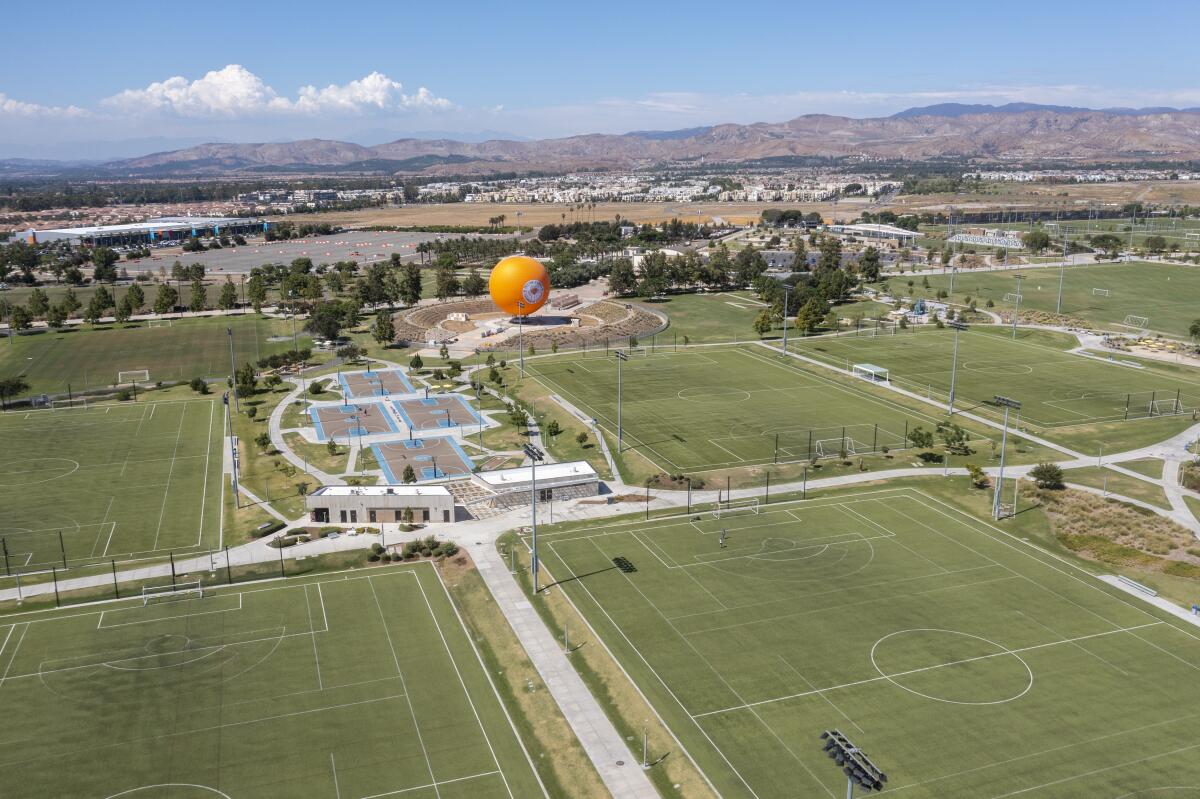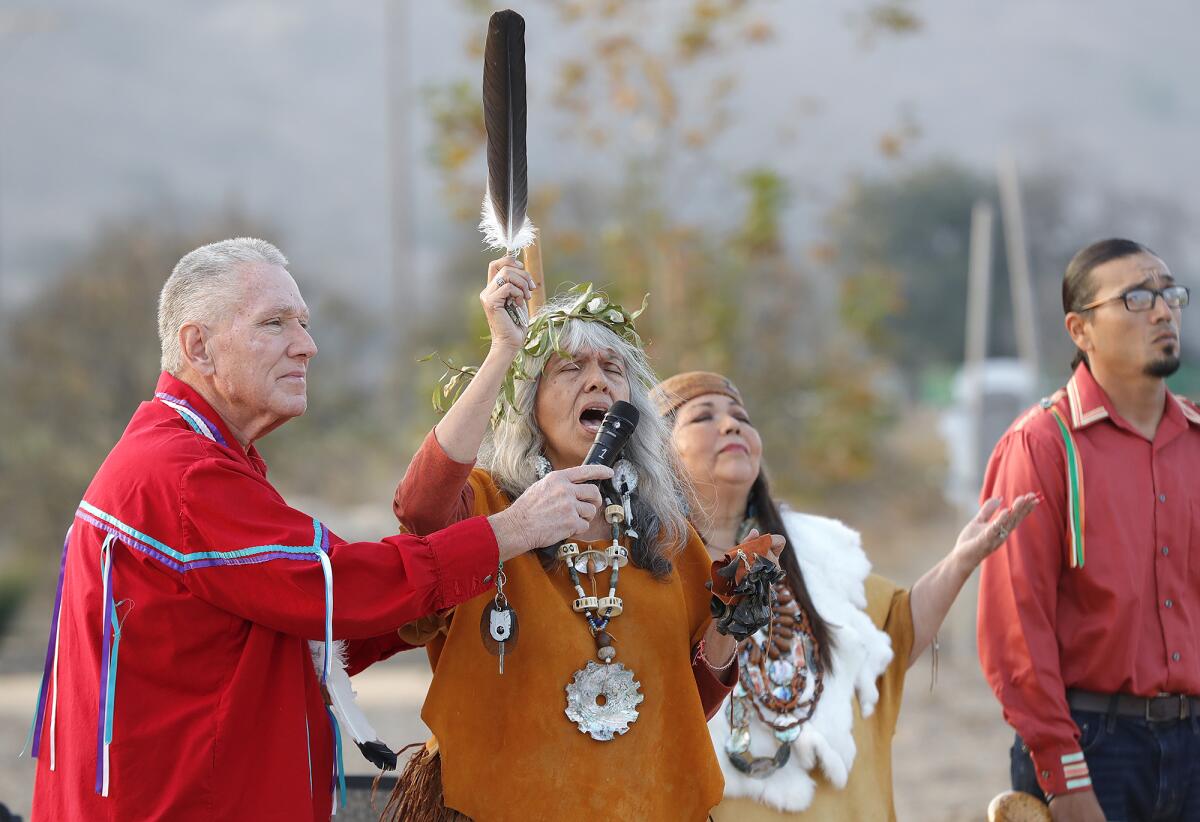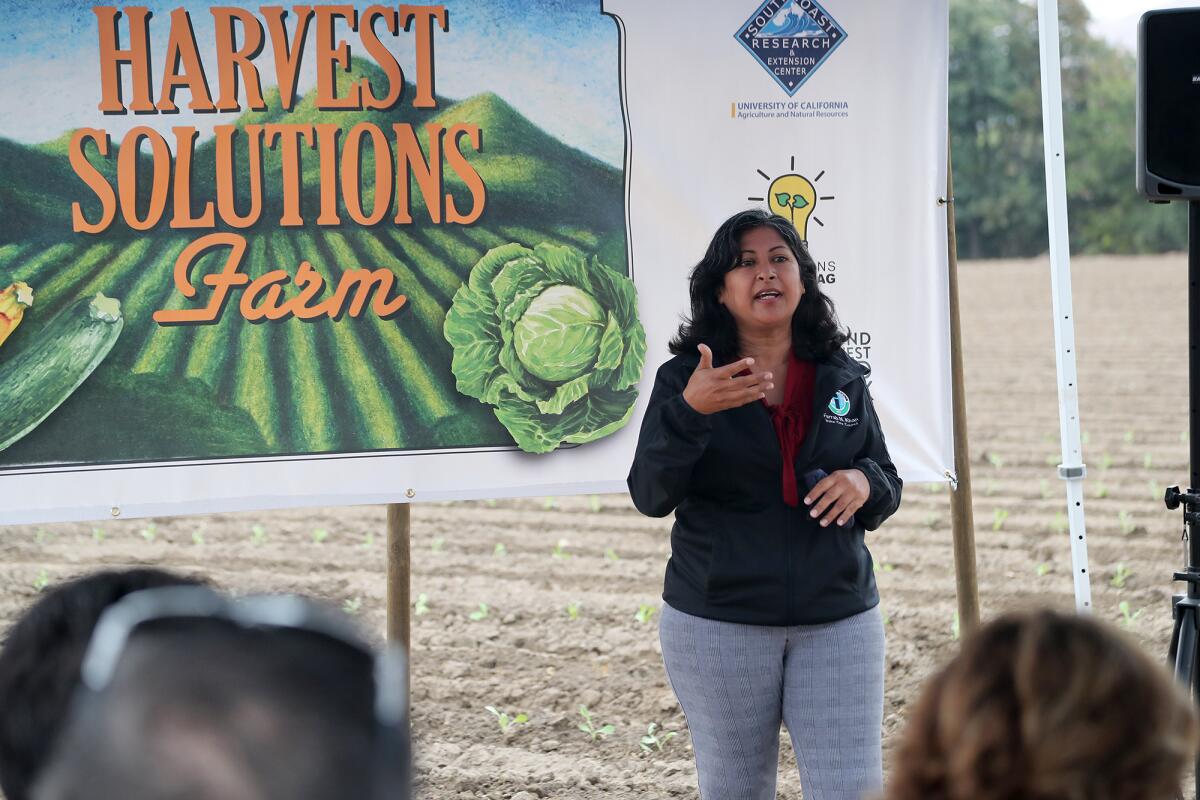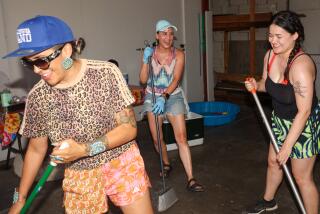Task force presses Irvine for museum to honor first people of Orange County

Many of the ancestral artifacts of the original people of Orange County lie hidden away in storage, waiting to see the light of day.
The important cultural relics tell the story of the Juaneño Band of Mission Indians, whose sacred sites and traditional lands were plundered, desecrated and devoured by development.
But a cohort of community and tribal members is working toward finding a home for the artifacts, pressing Irvine to create a cultural and natural history museum in the cityâs Great Park.
Joyce Perry, a member of the Juaneño Band of Mission Indians and an advisor to the museum task force, said in a phone interview that there is nothing in the county that tells her tribeâs whole story. She said there are thousands of artifacts âthat need to come out,â tucked away in warehouses, universities, anthropological societies and other storage areas.
After years of delays, the Putuidem Village opened last month in San Clemente. Though the opening was seen as a major victory for the tribe, the 1.5-acre passive park doesnât provide a home for the Juaneño artifacts. Perry said a museum would hold deep meaning for her tribe.
âWe have items all across the world, but where do we put them?â Perry said. âWhat better place than a museum, and a museum that is in our homeland?â

The campaign for a museum began in 2015, when Mel Schantz Jr. said he started pushing for a site to honor the Native American community because it didnât have any significant representation in Orange County.
âI needed to start putting in for something that honors the Native Americans that walked this land way before it became El Toro Air Base or the Great Park,â he said.
Descendants of the Acjachemen, whose history traces thousands of years, became known as the Juaneños when Spanish colonialists built Mission San Juan Capistrano in 1776. Today, the tribe has about 1,900 members.
Schantz said he started speaking with members of the Native American community to propose his idea for a ceremonial site. With the help of Juaneño tribal member Rebecca Robles and Cal State L.A. anthropology professor Pat Martz, they came up with a plan for a cultural and natural history museum, and the museum task force was formed.
The volunteer group has worked hard to get city officials to buy into the vision of the museum being a central feature of the Great Parkâs Cultural Terrace, a 236-acre portion of the park. The museum would also include fossils uncovered in Orange County.
âSince that time, administrations come and go, and the various council people that Iâve talked to, some of their eyes kind of glaze over when Iâm talking about Indigenous issues,â Schantz said, pointing out that several current council members have been supportive of the proposal.
Irvine Mayor Farrah Khan said last week that sheâs been supportive of the museum plan because it would be beneficial for the community. However, sheâs concerned with how a museum would be funded. Khan said funding for the Great Park is running out, so there wouldnât be enough from the cityâs coffers to fully get a museum off the ground.
âThat doesnât mean that we canât look into getting some help from the state or federal government for grants,â Khan said. âThat might be a possibility, but fully funding by city funds is just not going to be available.â

The City Council will be making some important decisions about the future of the Great Park in the new year. Over the last two months, Irvine has been seeking public input to update its master plan of the park, which hasnât lived up to its original billing as the second coming of New Yorkâs iconic Central Park. Located at the site of the former Marine Corps Air Station El Toro, the park today has a large sports complex, a soccer stadium, an amphitheater, a skating rink and a large orange balloon.
Khan said City Council members will review the community feedback on the Great Park, then make decisions about additions to the park.
A museum wouldnât be the first time the city has worked with the Acjachemen. Khan said they created a community center in the Portola Springs neighborhood to showcase artifacts that were found in the area.
Perry said the city has a good working relationship with the tribe and it understands the importance of honoring traditions and cultures.
âWe made sure that we brought in members from the Acjachemen tribe to kind of help us with not only creating a room with the artifacts, but also providing the history,â Khan said. âSo thatâs something thatâs very important, I think, not only for myself, but the rest of my colleagues.â
If plans move forward for a with the museum, Perry wants to ensure that the tribe plays a central role in its plans.
âItâs been part of my lifeâs work to see that this happens, on top of making sure that the tribal perspective is always part of the story, since so many times weâre erased out of the story,â Perry said.
Schantz echoed the need for the tribe to dictate the direction of a museum.
âI do not speak for the tribe or its members, but in the shared belief that native history and culture is best told by tribal members themselves, especially where it comes to anthropology and archeology,â Schantz said. âGiven that there are qualified and accredited tribal members in this field, it is my vision that they would be a primary component of the museum where it comes to the collections of artifacts, public displays and representations, as well as the research involved at the Museum of Culture and Natural History.â
More to Read
Sign up for Essential California
The most important California stories and recommendations in your inbox every morning.
You may occasionally receive promotional content from the Los Angeles Times.











